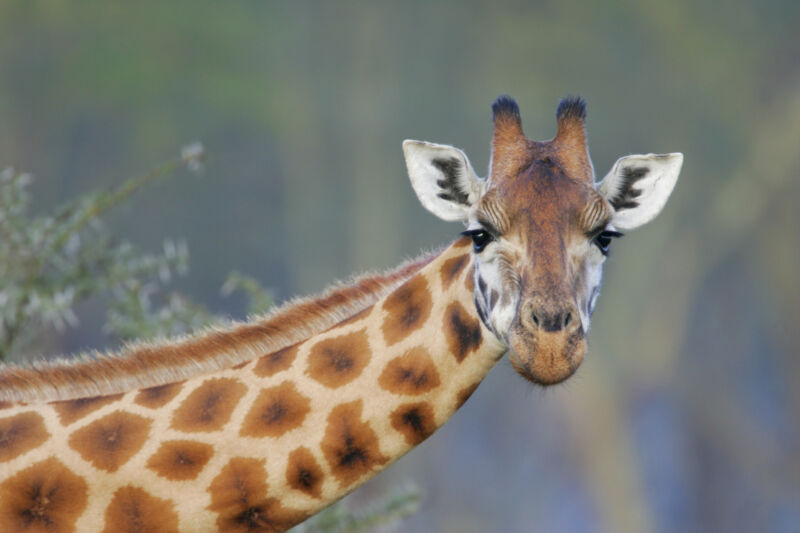
Reasoning about probabilities is something humans can't always manage especially well, but it's clearly a skill we're capable of. In the wider world of animals, however, there are very few species we can say are able to make choices based on probabilities. So far, the only animals that have demonstrated the ability to make choices based on statistics are our fellow primates and the kea, an alpine parrot from New Zealand.
All the species where this ability had been seen have a large brain relative to their body size, a feature that is associated with many advanced cognitive capabilities. So it was reasonable to conclude that statistical reasoning required some significant mental horsepower. But a study released on Thursday indicates that managing probabilities may be more widespread than we think since an animal with a relatively small brain—the giraffe—is apparently capable of it.
Chances are...
Reasoning based on probability and statistics sounds complicated, but we do it all the time. We weigh the likelihood of various factors when deciding what to bet in poker or which route to take on a commute. We're not always good about it; if we were, we'd freak out more about driving than we do about air travel. But the capacity to do so is there.
The ability is also distinct from basic numeracy. When we choose which checkout line to commit to at the grocery store, we're typically just counting the number of people in each line, not weighing any sort of probability. One of the challenges of doing this sort of behavioral science with animals is distinguishing between probabilistic reasoning and basic numerical abilities.
Behavioral scientists seem to have settled on an approach where they start with a mixture of things the animal desires along with items they're indifferent to and vary the number and ratio of both of them. In the case of giraffes, this means giving them mixtures of carrots or zucchini—given the choice, they'll go for the carrots every time.
For the experiment, the researchers would show the animals tubs with mixtures of the two vegetables, then grab a single item from each without the giraffe being able to see what is in each hand. The animal would then gesture to one of the hands and receive whatever food item it held. For the basic test, the researchers had two tubs: one that contained 20 carrots and 80 pieces of zucchini and another that contained 80 carrots and 20 pieces of zucchini.
All four of the tested giraffes immediately figured this one out. In the first round of 20 tests, each was able to choose the hand that had a higher probability of holding a carrot at least 17 times.
reader comments
88